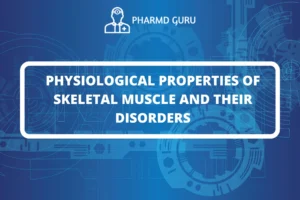The thalamus, hypothalamus, and basal ganglia are three important structures located within the brain. Each of these regions plays distinct roles in various physiological and cognitive functions.
SCROLL DOWN TO THE BOTTOM OF THE PAGE FOR ACTUAL NOTES
Thalamus:
The thalamus is a critical relay center located deep within the brain, serving as a gateway between various sensory inputs and the cerebral cortex. It is often referred to as the “gateway to the cortex.” The thalamus receives sensory information from various sensory systems, including vision, hearing, touch, taste, and smell. It then relays this information to the appropriate regions of the cerebral cortex, where further processing and interpretation occur.
In addition to sensory processing, the thalamus is also involved in regulating consciousness, attention, and alertness. It plays a crucial role in coordinating the flow of information within the brain, ensuring that sensory inputs are properly transmitted to the appropriate areas for further analysis.
Hypothalamus:
The hypothalamus is a small but mighty structure located just below the thalamus. Despite its size, the hypothalamus is responsible for regulating a wide range of physiological processes and behaviors, making it a vital part of the brain’s overall control center.
The hypothalamus is the primary regulator of the autonomic nervous system, which controls involuntary bodily functions such as heart rate, blood pressure, body temperature, and digestion. It helps maintain homeostasis by responding to changes in the body’s internal environment and triggering appropriate responses to keep the body’s functions in balance.
Additionally, the hypothalamus plays a critical role in controlling various motivated behaviors, including hunger, thirst, sleep, and sexual behavior. It produces and releases hormones that control the functions of the pituitary gland, making it an essential part of the endocrine system.
Basal Ganglia:
The basal ganglia are a group of nuclei located deep within the brain, associated with the control of voluntary movements and various cognitive functions. The basal ganglia work together with the cerebral cortex to regulate motor coordination, movement initiation, and movement execution.
One of the key components of the basal ganglia is the substantia nigra, which contains dopamine-producing neurons. Dopamine plays a crucial role in motor control, and the loss of dopamine-producing cells in the substantia nigra is associated with movement disorders such as Parkinson’s disease.
The basal ganglia are also involved in cognitive functions, including decision-making, reward processing, and habit formation. Dysfunctions in the basal ganglia have been linked to certain neurological and psychiatric disorders, such as Parkinson’s disease, Huntington’s disease, and obsessive-compulsive disorder.
Conclusion:
The thalamus, hypothalamus, and basal ganglia are three distinct brain regions, each playing critical roles in different aspects of brain function. The thalamus acts as a relay center for sensory information and helps coordinate brain activity, while the hypothalamus regulates autonomic functions and motivated behaviors. The basal ganglia are essential for motor control and cognitive functions. Understanding the anatomy and functions of these brain structures provides valuable insights into how the brain processes information and controls various bodily functions and behaviors.
ACTUAL NOTES




